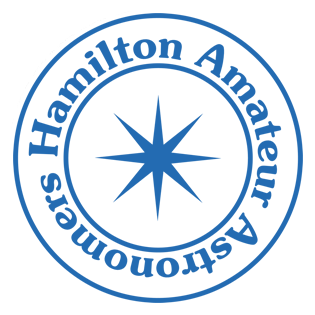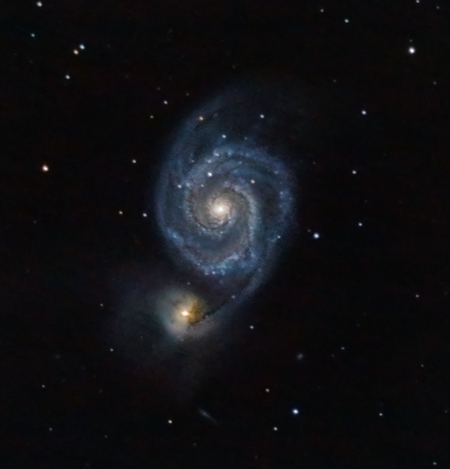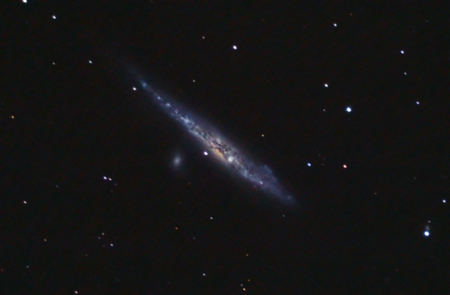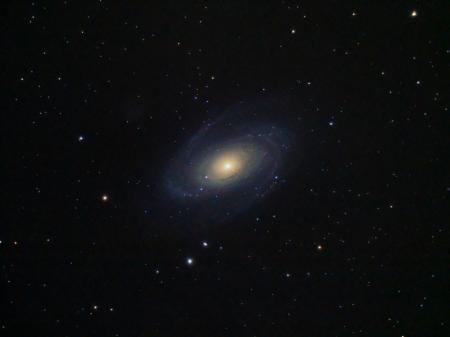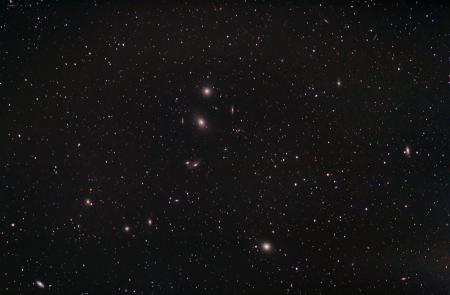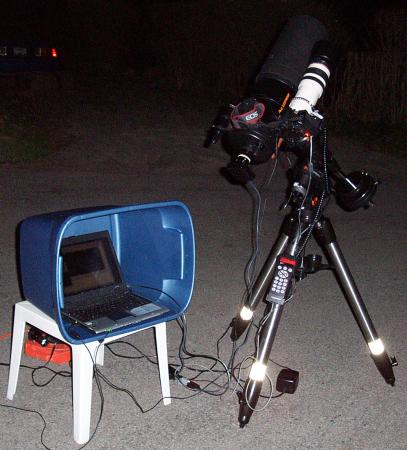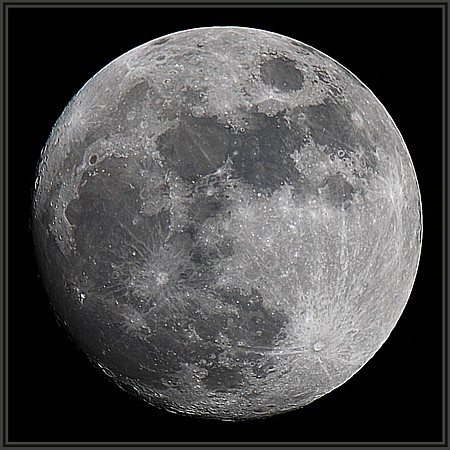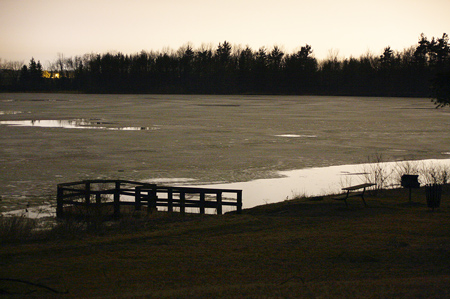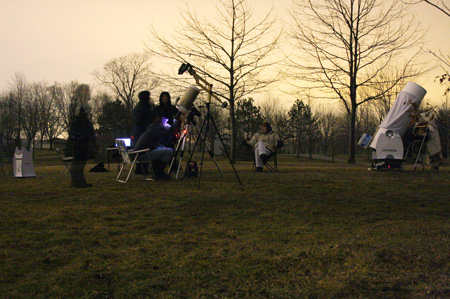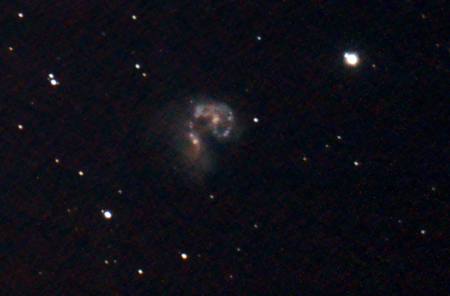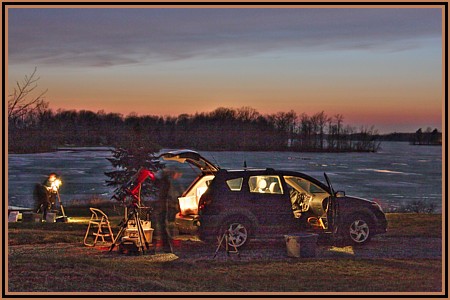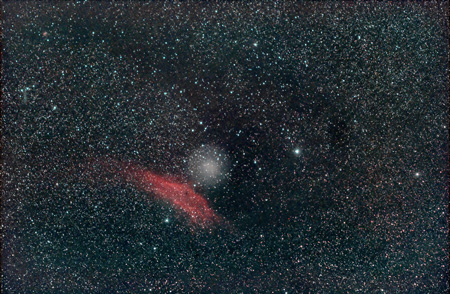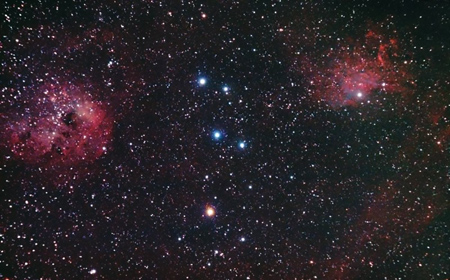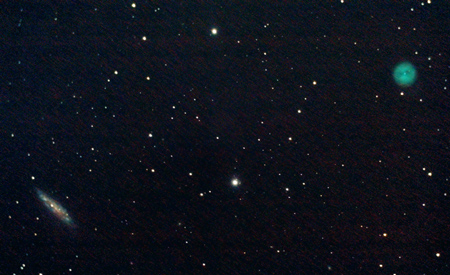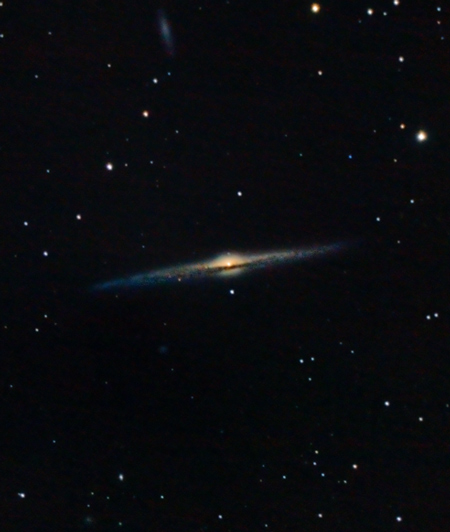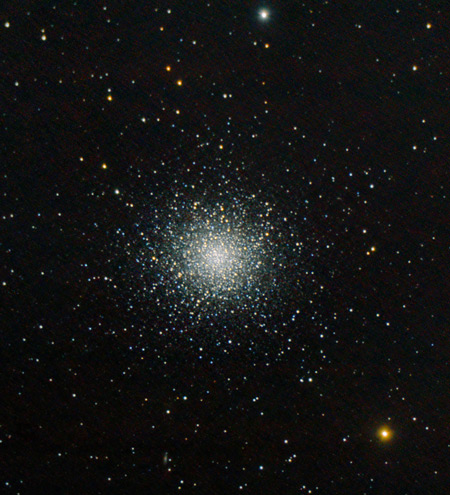We got to the gates, all together, at just about 8 PM. After putting on the combination lock, in anticipation of more astronomers, we continued to the end of the road. The sqm read 14.4 in the waning glow of sunset. The half moon was hours away… so many places to go, things to see.
Tim, Wayne and I set up at Binbrook near the pavilion, on the paved road. Jim and John arrived shortly. They aligned their scopes while i constructed and collimated mine.
There are a lot of trees near there, fortunately mostly deciduous, except for one pine tree between me and Andromeda. Weather permitting, the hill has a better view of the sky, but it’s really nice to be able to put equipment down on a dry paved road instead of juggling it. Tim set up his camera for wide-angle shots of Orion, and Jim and John set up their goto scopes. Wayne set up his scope and soon his family arrived to share the views. Saturn, Mars, M45, and M44 were steady and sharp in the scopes tonight.
About 9:30 the ISS and ATV came by for another pass. We were able to see them both in the sky, and track them with the GWS, although one person tracking using the red dot finder and a different one looking through the scope.
Soon we were sharing views of DSOs. John had a wide enough field to show 2 clusters from Auriga at the same time. I fished them up one at a time for practice. M35 has a nearby much smaller open cluster NGC2158 which we were able to glimpse in his and Jim’s scope. A big enough scope can see through trees, and the GWS was up for it.
I was able to point the GWS at M35 with a minimum of effort, and from there down to NGC2158
which was like a very fine pile of small diamonds.
We shared views of various DSOs and eventually John brought out the Pentax eyepieces and we gave them a try. Once the Pentaxes started moving, it was just a case of seeing how much magnification they could bear. M3 was a delight, and improved with magnification each time we tried.
In the GWS it was positively stunning, even at just 150x. We reached for a Pentax 5 mm and achieved 365x, and it still looked nice, with fine stars. I love my equatorial platform… M3 stayed neatly centered for many minutes while we made eyepiece changes and walked from scope to scope to compare.
We put a Big Barlow on the 5 with the GWS, for a magnification of about 730x, and it did not really improve the view of M3 much. But the EQP held it steady. I think i preferred it under more like a 5 mm view (365x).
The LPR filter did not enhance any views from Binbrook. I still hold out hope for it
from other sites I frequent though.
M104, the sombrero galaxy, was easy to find in Corvus. In fact, i was pretty much hitting the nail on the head each time i reached for a M number.
Items we visited tonight…
The double cluster, and some views in Perseus, m42; m44 an easy naked eye target tonight; m45 of course, including in binoculars; Saturn; Mars in cancer; M36 M37 M38; M35 and NGC2158, M51 at midnight (My next SMM object); M35 which looked like it had the outline of a space shuttle with stubby wings, neatly arranged vertically waiting for takeoff. M13, M92, M104. I wanted to try the double double, and M57, but it was through trees and just rising as the clouds rolled in at 12:30 AM. Cygnus was through trees and low over Hamilton when the clouds rolled in. M27 would have been a pretty sight tonight.
I tried to use my EOS again on the GWS. This time with a low profile T adapter it is still too far to focus… but i tried the barlow and that brought things to a focus. Unfortunately, without wanting to risk my night vision, i did not have the time and energy to focus the system, so my first 2 astrophotos through the scope turned out to me more like test shots….
but at least the nut has cracked.
The Hyperion 24-8 zoom eyepiece turns out to be inferior to a good Pentax, as you might expect, and zooming did not help me identify any more stars in the Trapezium. I got stopped at 5 stars. Also, while zooming, adjustment of the focus is required. This is not as i was told at the store… i am not happy with my purchase. I am hoping its ability to save me fumbling for eyepieces on dew filled summer nights will partly make up for my disappointment.
I am happy with the performance of the Big Barlow though. Thanks, Mike. It was such a fine night that i neglected to use the SQM in the heat of the moment. Speaking of heat, it was pretty cold, but there was no dew or frost on the scopes, although a bit on my car. I managed the night without gloves till it was time to heft metal at take-down.
I remembered the SQM on the way to TH… skies on the road away from Binbrook were at 19.75 on the SQM. It was not particularly dark in that regard, but the seeing was steady and transparency was good.
Around 12:30 AM, clouds could be seen rolling in from Hamilton, and we decided to pack up
and head for TH. Turns out, they toss out all the food at 1 AM. Not just move it to the back room, but straight into the garbage. We thought about the energy spent making the food and how it might do better to send some of it to a homeless shelter, or maybe just keep it till the ovens are making the new batch… but alas, no dice. Summertime is going to have even later evenings… i guess we need a backup plan for after-food.
We still managed to spend 80 minutes chatting up a storm about everything from the dark skies of Alsask Saskatchewan to the skies of Mountsberg Ontario, better uses of leftover food, and the magnificent plumage on Turkey Vultures. The Qu’Appelle Valley and the Rockton World’s Fair.
If you know the combination, join us, if not, join the club and ask someone, and find out! The skies are fine, the equipment is able, and the astronomers are friendly!
UPDATE by Tim Harpur
I spent my time testing my 50-500mm Sigma “Bigma” Lens on Orion. The first set is very wide field (50mm)- with Orion being so low in the horizon and setting early – light pollution (seen on the right as I rotated the images 90 degrees CCW) was a major limitting factor. The following were all shot at ISO 1600 – 2 minutes each – then stacked – each image only has about 8 images stacked so not the highest quality.
The following is a close up cropping of the belt from the above images (it is not a seperate shot):
The following image was shot at 161mm.
